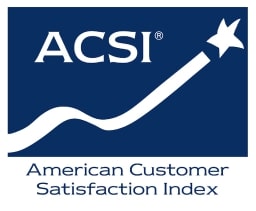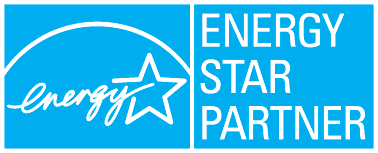Hurricane Season is Here
June 1 marks the official start of the 2022 hurricane season. At the Cooperative, we continuously monitor developing weather systems during these six months. Every tropical disturbance, depression and storm, and every hurricane draws our attention, challenging us each time to ask, “What if…?” What if one or more of these storms impacts our region as Hurricane Harvey did back in 2017? How should we prepare? What are the lessons learned from previous storms?
Although preparation can vary slightly from storm to storm, one thing doesn’t change: GVEC’s year-round efforts to be ready. This is why we’ve developed an active Emergency Operations Plan that we continually review, train with, revise and update every year.
Spreading the Word
An important part of GVEC’s preparation for hurricane season is getting word out to members that they too should prepare. If a major storm impacts our region, do you have a plan in place? If not, now is the time! And even if you do have a plan, we urge you to review it, practice it and make sure you have all the pieces needed to deal with a major storm. Below are some tips for helping prepare for the 2022 hurricane season.
1. Make an Evacuation Plan
– Texas communities with potential to be impacted by a hurricane or tropical storm create evacuation routes from the area in the event of a hurricane. When a storm is forecast to hit, these routes are “activated.” You can find out where evacuation routes are near you and if they’ve been activated by visiting DriveTexas.org or by calling 800.452.9292. You can also find out if you live in an evacuation zone by dialing 211.
2. Sign Up for Emergency Alerts Through SmartHub®
As a GVEC member, you can use the SmartHub portal to stay informed about outages and weather alerts.
3. Sign Up for TextPower™, GVEC’s Outage Reporting and Information System
With a working cellphone linked to your Cooperative account, you can sign up for TextPower, which allows you to report outages and to receive updates regarding outage occurrence and restoration at your address.
4. Use the Wireless Emergency Alerts System
The wireless emergency alerts (WEAs) system is a free service provided by state, local and national government, FEMA, the FCC and wireless service providers across the United States. These alerts, which inform users of impending weather or other emergencies, are available on most current handheld devices and are distributed by most wireless carriers. To find out if your device is WEA compatible, contact your device manufacturer or consult your user manual. Contact your carrier to verify if it participates in WEA alerts.
5. Prepare an emergency supply kit
GVEC has written a number of blogs and articles for The GVEC Review over the years regarding hurricane preparedness, including how to compile an emergency storm supply kit. Fortunately, the advice in these how-to articles and preparedness blogs never goes out of style.
The U.S. government also maintains a website for tips on building at an emergency supply kit.
6. Review Your Home Insurance Policy
Know what’s covered, what isn’t, and what your limits and deductibles are. It’s also important to understand that most general homeowners insurance policies don’t cover flooding. For that, you’ll need separate, specialized flood insurance. This can be purchased through independent insurance agencies or through the U.S. government’s National Flood Insurance Program, managed through FEMA.
7. Register with the State of Texas Emergency Assistance Registry (STEAR)
This registry helps local communities stay apprised of residents who need specialized assistance in the event of an emergency. It’s designed for people who fall into any of the following categories:
- Disabled
- Medically fragile
- Limited mobility
- Communication barriers
- Needs special medical assistance, transportation or personal care during an emergency
**It’s important to note that all information submitted through STEAR is confidential. Signing up does not guarantee special assistance in the event of an emergency; any assistance provided is dependent on the resources and needs of your local community and what’s offered. You can learn more about STEAR here or sign up for STEAR at this website.
8. Here Are Some Additional Online Hurricane Preparedness Resources:
- Texas Division of Emergency Management
- Texas Department of State Health Services
- American Red Cross
- S. Department of Homeland Security
- Office of Texas Governor Greg Abbott
9. Follow all Safety Instructions and Alert GVEC if Using a Home Generator
If improperly connected, home generators can cause backfeeding onto power lines. This is a dangerous phenomenon that can endanger not only the safety of GVEC linemen working to restore an outage, but also the safety of people in your home and even in neighboring homes. Backfeeding can also damage property and Cooperative equipment. This is why we urge you to contact GVEC to let us know you are installing a generator. This allows us to know locations where generators may be in use during a power outage.
If you’ve purchase a home generator but not yet installed the transfer switch, you’ll also need to contact us for important information regarding installation. This includes an easement review and connection requirements the electrician will need for proper install.
Just call us at 800.223.4832. No matter where you are in the purchase/install process, one of our knowledgeable customer service representatives can help you make sure you have the information you need, while also making sure GVEC has the information we need regarding your generator.
10. Keep Your GVEC Account Information Up-to-Date
It’s important to keep your GVEC account updated at all times of year, but especially during hurricane season. Having your current email address, mailing address and phone number on file with the Cooperative ensures you have access to services like SmartHub and TextPower. As mentioned, these help you keep aware of outages or other important information in emergency or severe weather situations. To get your account updated, visit the GVEC SmartHub portal from a desktop computer or call us at 800.223.4832.



